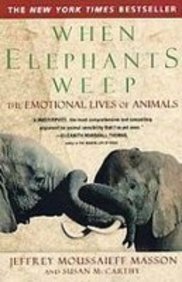What do you think?
Rate this book


291 pages, Hardcover
First published January 1, 1994
[It] is vital to treat animals as members of their own species. Treating them as either machines or people denigrates them. Acknowledgment of their emotional lives is the first step; understanding that their emotional lives are their own and not ours is the second. At the same time, if humans have no peers as cognitive beings and creatures of elaborate cultures, as emotional beings we are anything but alone.... Human life cannot be understood without emotions. To leave questions of animal emotion as forever unapproachable and imponderable is arbitrary intellectual helplessness.In short: We're animals, y'all!